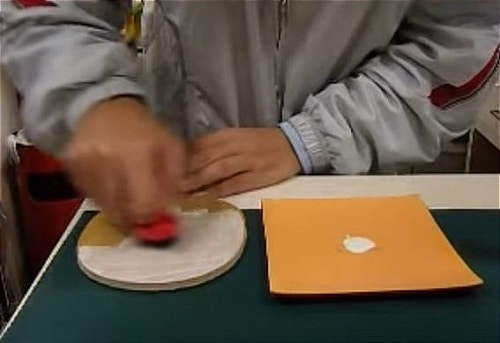A friend recently asked me how do people test the hardness of the rubber sponge. I believe there is a machine that measures the sponge hardness(in degree) called a Durometer. The higher the number – usually the harder the sponge.
If you are wondering, how does one compute the hardness of the sponge? What calculations or on what concept/principles? The below information may shed some light for you on this topic.

Table of Contents
Toggle
Industrial Standards in Measuring Rubber Hardness
There are measuring standards in the
Because this is the measuring standard used in the
A vital sponge characteristic is the level of its hardness. The harder the sponge is, the more speed it will give. For the hard sponge, the disadvantage is it’s more difficult for the player to drive the ball into the sponge, which means they are more challenging to perform loop drive. While for the soft sponge, it is more difficult to control when doing the blocking.
Some of the manufacturers’ values use degrees, while others categorized them into 3 main categories: soft, Medium, or Hard. Also, some manufacturers do not provide any information on sponge hardness at all.
The manufacturers give the ‘soft,’ ‘medium,’ and ‘hard’ meaning the sponge and the top sheet for your information. The overall feeling means the
Some rubbers I have seen have the hardness number etched on the back of the rubbers. How can you find out the degree of hardness that soft, medium, and a hard cover?
For example, some people term any number from 33 degrees and below as being soft. But in fact, it all depends on who the maker of the
In the case of XIOM, the Omega IV has a 40-degree hardness. They mention it as ‘extra soft.’ All other rubbers have a hardness greater than 40 degrees.
Equipment to Gauge the Hardness?
In my opinion, there is no special equipment used to measure the hardness of the
It is like the pillow that we use. In certain places, you may have seen the pillow made of cotton. They are hard as a rock. Now I see very soft even to the level of calling feather-light pillows. The hardness of the pillow varies by how you feel when you rest your head on it. Based on that, I can give value to the various pillows. In the case of rubbers, it is the bounce of the ball.
That’s my theory. When I visit some of those factories, I will get more info. Nevertheless, it is okay to continue the discussion by considering that a machine exists to measure the hardness.
Attaching New Table Tennis Rubber
This article includes valuable information for table tennis players who want to put on table tennis
Introduction to Table Tennis Rubber
Most people who play table tennis recreationally and may even continue to refer to the sport as “ping pong” tend to buy ready-made and packaged rackets with a standard (of sub-standard quality) kind of

There are a lot of things to think about when selecting a
Removing Table Tennis Rubber
Before applying a new table tennis rubber to your racket, you must remove the current
Putting Table Tennis Rubber on Your Racket
After you read this, please see the video below, and you will be surprised at how easily you can do this. The difficulties that come up when attaching table tennis
If the glue is gloppy in some places, thick in others, and thinner in yet others, it will reflect that in the bumpiness of the surface of the
The best tool for spreading the glue evenly is something like Mr. Clean’s Magic Eraser. I have found that to be a perfect way to spread the glue onto my racket.
A roller like the one pictured above is a good idea for people who may be doing this frequently. I would not go so far as to say it is required, but using some rolling pin or roller to apply the
It also helps to try not to be a perfectionist when you cut the
The other thing to be prepared for is the time that it may take and the smell of the glue itself. I have yet to meet a person who likes the smell of table tennis rubber glue.
Lastly, watch how to attach table tennis

Warren Davies
Hi, I’m Warren Davies, a table tennis addict who loves sharing tips, reviews, and everything you need to level up your game. I’ve spent years playing, testing gear, and geeking out over the sport, and I’m here to make things simple and fun for players of all levels. When I’m not writing, you’ll probably find me perfecting my forehand or trying out the latest paddle.








